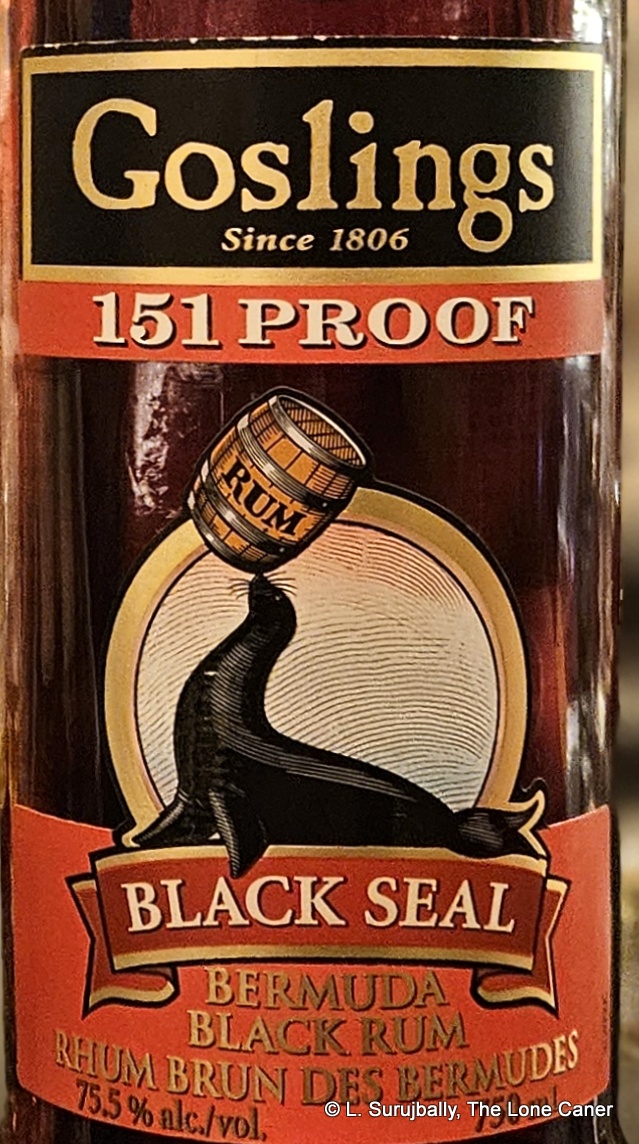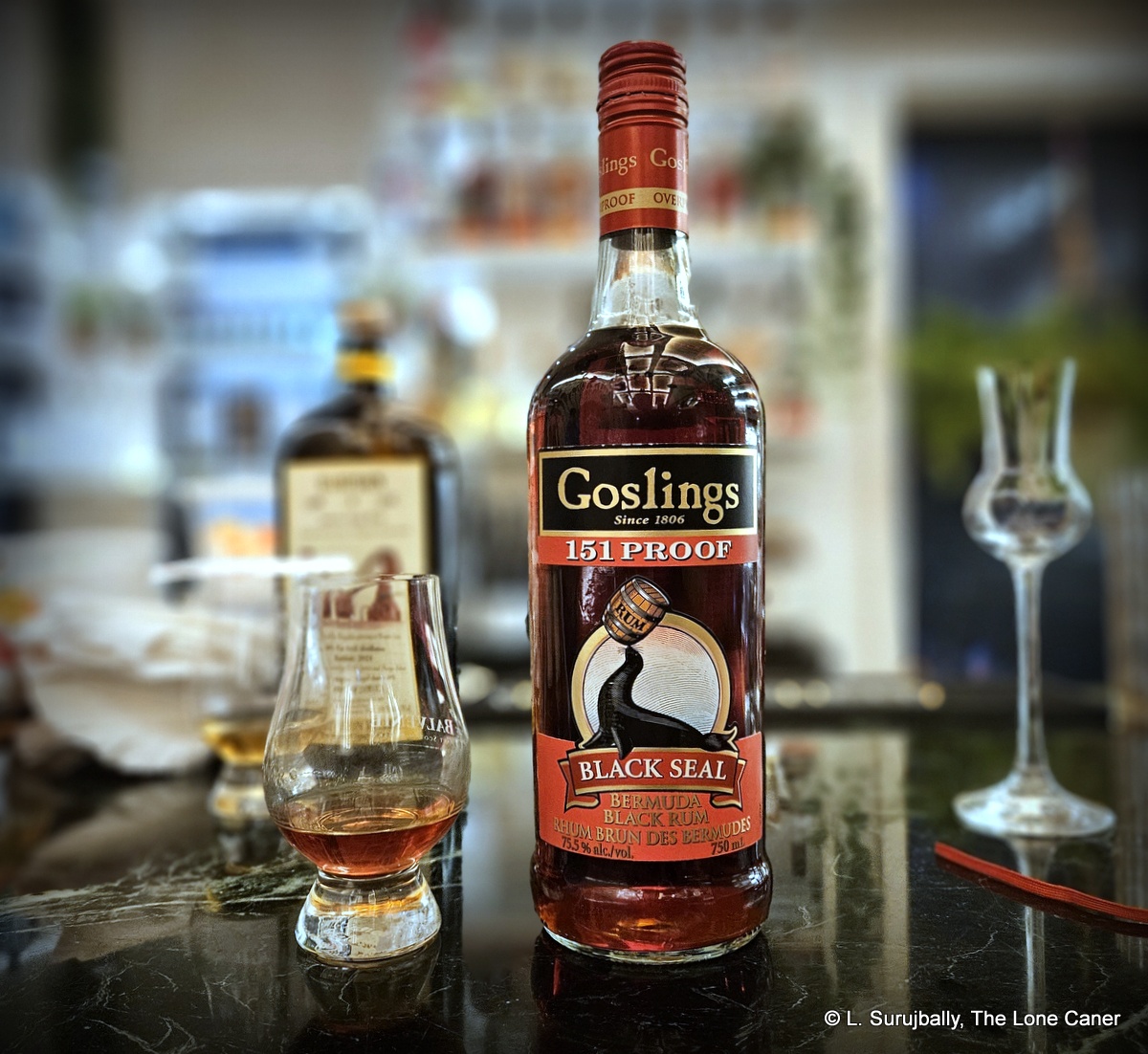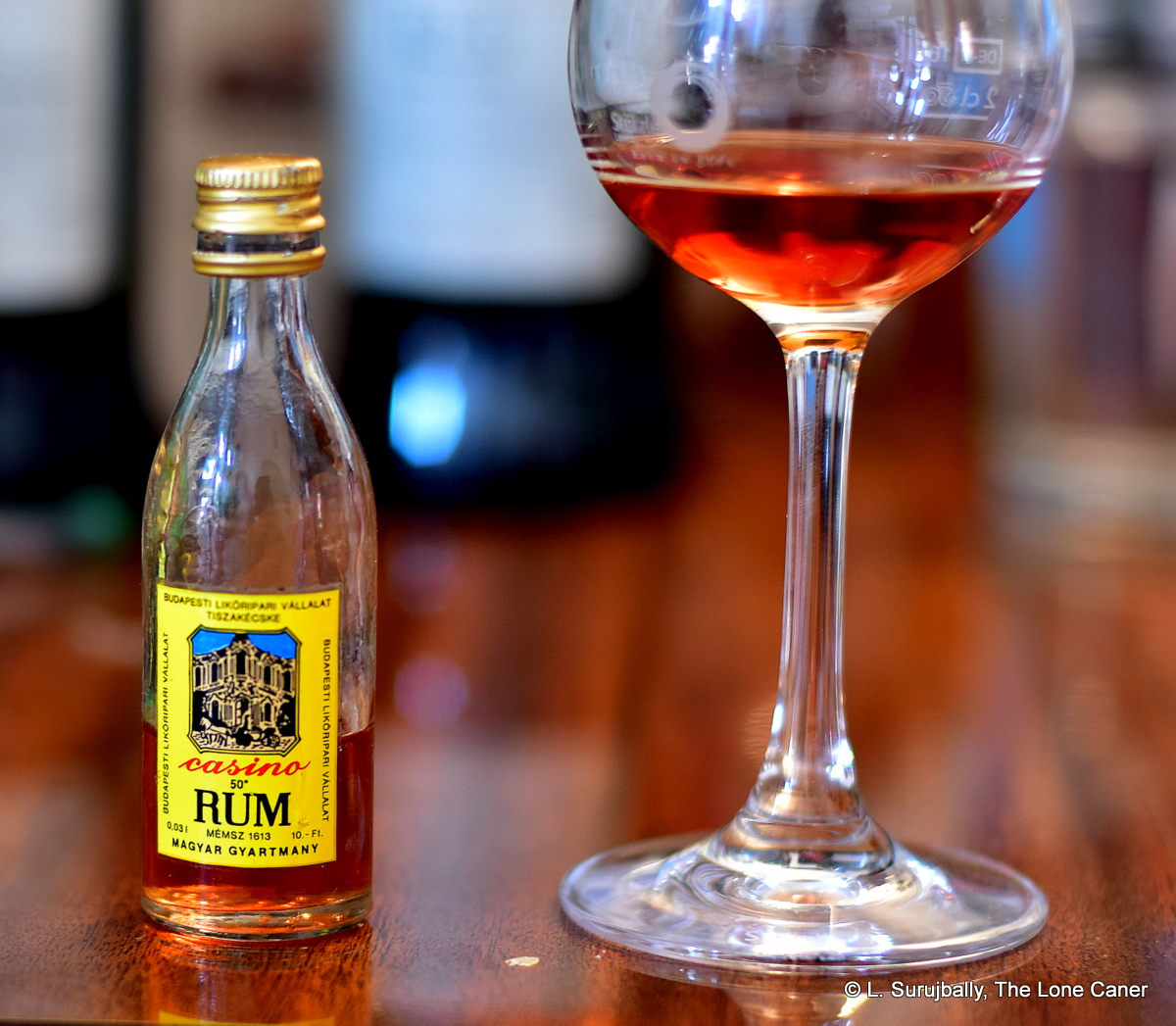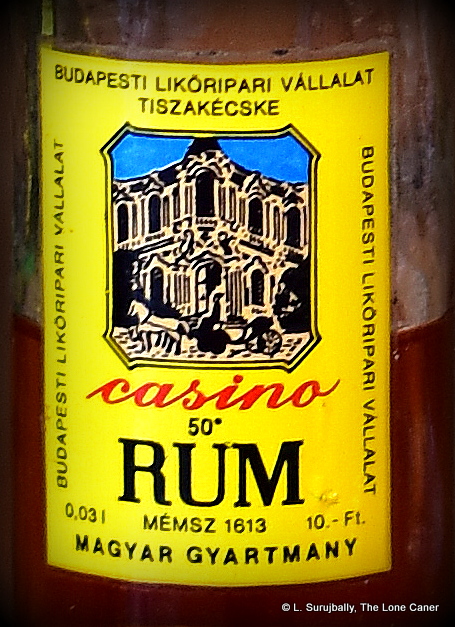Goslings remains a well-regarded rum brand for Americans in particular, even if most rum geeks pass it by these days, in favour of better rums with more disclosure and more distinct flavour profiles. At the time when I began my own rum journey, they were a mainstay of the affordable and easily mixable rums (Appleton, Cruzan, Doorley’s, Flor de Cana, Pussers and El Dorado were others), but over the years they have receded somewhat from the minds of many. Still, the brand exists and has an ever expanding stable of releases, it couldn’t very well be ignored forever. So when I passed through Toronto’s Little Sister bar and restaurant where my friend Robin Wynne hangs his hat these days, and I saw he had some bottles on his shelf…well, what’s a guy to do?
I’ll provide a more detailed company backgrounder below this review: for the moment, let me just mention that there’s a lack of information about what goes into Goslings rums which I find highly irritating in this day and age. It is never mentioned where the base distillate for their various releases comes from – not for the Black Seal, the 151, the Spirited Seas, Family Reserve or Single Barrel, none of them. We also don’t know the still of origin, or the age; however, House of Malt website in the UK notes it as being a minimum of three years old, and aged in charred barrels. However, given the hue, it’s obviously got E150 chucked in to ensure the dark colour gives the (misleading) impression of more serious ageing.
So: it’s a 151 overproof rum (see here for an in-depth article on the subject) at 75.5% ABV, sulking in the glass, dark of hue and sullen in mien, inspiring nothing but nervousness brought about by traumatic encounters with others of its tribe… like, oh, the Bacardi 151. The first smells are hot and fierce and thin, redolent of plastic and furniture polish, but fortunately the nose settles its ass down after a bit, and then one gets mostly leather, smoke, carmel and molasses. There’s some damp tobacco and cinnamon, some raisins, maybe a fig or two – overall, it’s not too bad, if one has the patience to wait a while for the alcohol to burn off so the aromas can be more clearly sensed.
 I genuinely believe that even at that strength, the taste is surprisingly good for a rum that numbered itself among the entry-level bottom-feeders. Once one recovers one’s voice and the tonsils settle down from the attack of sharp alcohol, there are notes of plasticine, rubber, and candy floss, as well as hints of white chocolate and an uninspired macchiato with too much foam. Add to that some cinnamon, molasses, caramel, toffee, almonds, cardamom, stale coffee grounds (!), plus some bitterness and dried fruits in the backseat, and that’s pretty much it. At that strength the exit takes its own sweet time, but overall, long as it is, the finish adds little that’s new to the party, so I’ll leave it there.
I genuinely believe that even at that strength, the taste is surprisingly good for a rum that numbered itself among the entry-level bottom-feeders. Once one recovers one’s voice and the tonsils settle down from the attack of sharp alcohol, there are notes of plasticine, rubber, and candy floss, as well as hints of white chocolate and an uninspired macchiato with too much foam. Add to that some cinnamon, molasses, caramel, toffee, almonds, cardamom, stale coffee grounds (!), plus some bitterness and dried fruits in the backseat, and that’s pretty much it. At that strength the exit takes its own sweet time, but overall, long as it is, the finish adds little that’s new to the party, so I’ll leave it there.
The question that arises, after tasting it is: where does the distillate originate? Bermuda doesn’t have a sugar industry or a serious distillation tradition and Goslings seems to have always imported its stocks. I have an unconfirmed report that Foursquare has provided barrels in the past, but the countries that jumped to mind for me as I tasted it were more Guyana and Trinidad. It remains an unanswered question for now, so if it’s terroire you want, look elsewhere, ’cause it ain’t here.
Most people who’ve written long or short evaluations of Gosling’s 151 over the last decade rate it at around 7/10, which I think is about right. There is more under the hood than I thought there would be, but that statement has to be parsed carefully. For one, the very dark reddish brown tint is unnatural, even for a rum aged for three years in charred barrels; the tastes are very traditional, heralding back to two decades ago when blends were everything and we were never told what the components were. But, we’ve moved on since those more innocent times, and here there’s little that’s new or exciting – the selling point is, of course, the strength, which suits it for exactly what it is, i.e., a mixing ingredient for strong cocktails.
That said, as a rum speaking for Bermuda based on tastes, hardly. It’s indeterminate, fairly straightforward and well done, yet offers little that’s exciting. It’s just a decent rum, that’s all: if that’s all you’re after, if you could care less about terroire, and the strength doesn’t put you off…well, then it’s worth a buy. I guess.
(#1129)(78/100) ⭐⭐⭐
Company background
So: Goslings. Let’s recap the history for those who like to know this stuff. Gosling’s hails from Bermuda, which is a British Overseas Territory, Britain’s oldest: the company is closely identified with the island and is, aside from tourism and some manufacturing, a mainstay of Bermuda’s non-financial-services economy.
The Gosling enterprise has been in business on Bermuda since 1806, when the ship’s charter for business in the USA expired while on the high seas. So instead of landing in Virginia, James Gosling, the son of a wine and spirits merchant in England, went ashore in St. George’s instead, and set up shop there with his brother. Rum blending from imported distillates began in 1860 (one wonders what they did before then), with the Old Rum brand launching three years later. The company’s rums were originally sold directly from barrels to customers who brought their own bottles, a practise that continued until the Great War; however, Goslings’ rums’ popularity and sales took off when they began salvaging used champagne bottles from the British navy’s officer’s mess, filling those with rum and sealing them with black wax.
The Old Rum was renamed the Black Seal, with the now-famous seal logo designed and coming into use in 1948: the champagne bottles are rarer now, used only for the Family Reserve line, but the logo has remained in use ever since. It is the company’s flagship brand and goes hand in glove with their signature cocktail “The Dark ‘n’ Stormy, which was developed in the mid 1960s and trademarked in 1980 (and rigorously enforced, as my friend Josh Miller of the rum website Inu-a-kena once found, to his chagrin).
Other notes
- Video recap link
- I could only find one hydrometer test on Gosling’s 151, and it was done in 2017 by The Fat Rum Pirate. It shows as pretty much “clean.”


 If we accept these data points, then of course the Casino is not, by all current definitions, a rum, and in point of fact, the entry might just as easily be listed in the Rumaniacs page since this version is no longer being made — the word “rum” was either replaced by “room” or dropped completely from the label when Hungary joined the EU in 2004, and that suggests a manufacture for the product I tasted of around 1988-2003 which actually makes it a heritage rum entry, but what the hell.
If we accept these data points, then of course the Casino is not, by all current definitions, a rum, and in point of fact, the entry might just as easily be listed in the Rumaniacs page since this version is no longer being made — the word “rum” was either replaced by “room” or dropped completely from the label when Hungary joined the EU in 2004, and that suggests a manufacture for the product I tasted of around 1988-2003 which actually makes it a heritage rum entry, but what the hell.